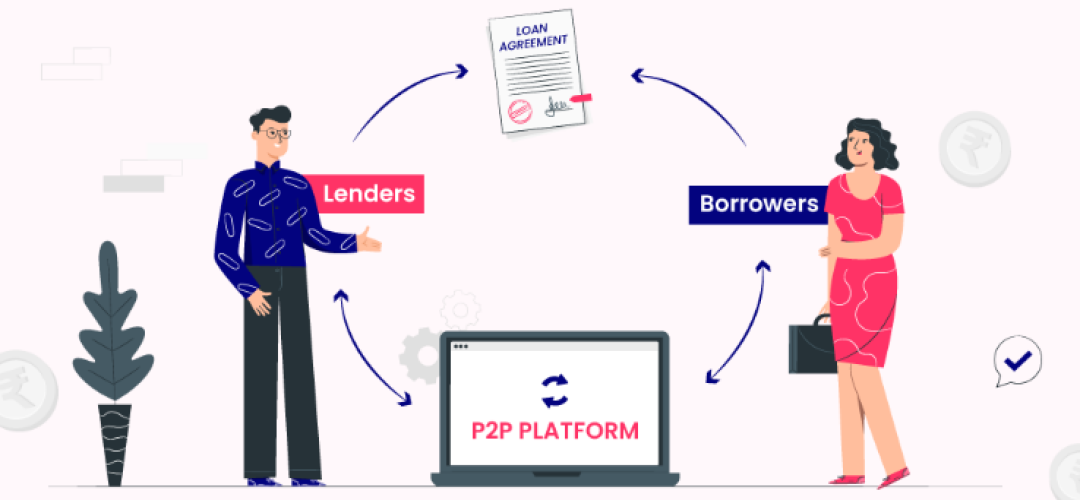Understanding peer-to-peer lending as an investment option is crucial for anyone looking to diversify their portfolio in today’s financial landscape. This revolutionary approach connects borrowers directly with investors, bypassing traditional financial institutions.
This blog outlines the fundamentals of investing in peer-to-peer loans, including the potential risks and rewards, and offers guidance on how to get started. By demystifying this innovative investment avenue, we aim to help you make informed decisions.
The Concept of Peer-to-peer Lending
At its core, peer-to-peer lending, or P2P lending, is a way to lend money to individuals or businesses through online platforms that match lenders with borrowers. It eliminates the need for traditional banking intermediaries, potentially offering higher returns to investors and lower interest rates to borrowers.
For investors, it presents an opportunity to diversify their investment portfolio beyond the conventional options like stocks and bonds. The process is facilitated by various platforms that vet borrowers, facilitate the transfer of funds, and handle the collection of payments.
However, as with any investment, it’s essential to understand the mechanisms involved and the potential for returns. Engaging with reputable P2P platforms and diversifying your investments across various loans can reduce the risks involved.
To gain a foundational understanding, one might explore the basics in the article What is peer-to-peer lending?
Assessing the Risks and Rewards
Investing in peer-to-peer loans offers attractive returns compared to traditional savings and investment products. However, it’s essential to weigh these potential rewards against the risks.
Default risk is primary among the concerns, as there’s always a possibility that borrowers might fail to repay the loans. Platforms mitigate this through credit checks and risk assessments, but the risk cannot be entirely eliminated.
Interest rate risk and liquidity risk are other factors to consider. P2L investments typically lock your capital for a period, making it less liquid than savings accounts or stocks.
Familiarize yourself with the Risks and rewards of investing in peer-to-peer loans for deeper insights.
How to Start Investing in Peer-to-peer Loans
Starting your investment journey in peer-to-peer lending begins with selecting a platform. Look for established platforms with a track record of reliability and solid risk assessment procedures.
Once you’ve chosen a platform, you’ll typically need to create an account, deposit funds, and then select the loans you wish to invest in. Most platforms allow you to choose based on the risk level, interest rates, and loan term.
Diversification is key in P2P investing. Spreading your investments across different borrowers, loan types, and risk categories can help mitigate potential losses.
For a comprehensive guide on entering this market, consider reading How to get started with peer-to-peer lending.
Strategizing Your P2P Investment
Developing a strategy is crucial for success in peer-to-peer lending. Consider your financial goals, risk tolerance, and investment horizon when making decisions.
Many investors start with a cautious approach, investing a small portion of their portfolio in P2L. Over time, as you become more familiar with the process and comfortable with the risks, you may choose to adjust your strategy.
It’s also wise to stay informed about market trends and regulatory changes that could impact the P2L landscape.
Monitoring and Managing Your Investment
Regular monitoring of your P2P investments is essential. Most platforms offer tools and reports to track loan performance, repayments, and overall portfolio health.
Managing your investment effectively also means being proactive about reinvesting repayments to ensure your capital is continuously working for you.
Peer-to-peer lending offers a unique opportunity for investors seeking to diversify their portfolios and potentially earn higher returns than traditional investment avenues. By understanding the basic principles, assessing the associated risks and rewards, and strategically choosing and managing investments, you can navigate the P2P lending space effectively. Remember, as with all investments, due diligence and a cautious approach can go a long way in ensuring a profitable and satisfying experience.






